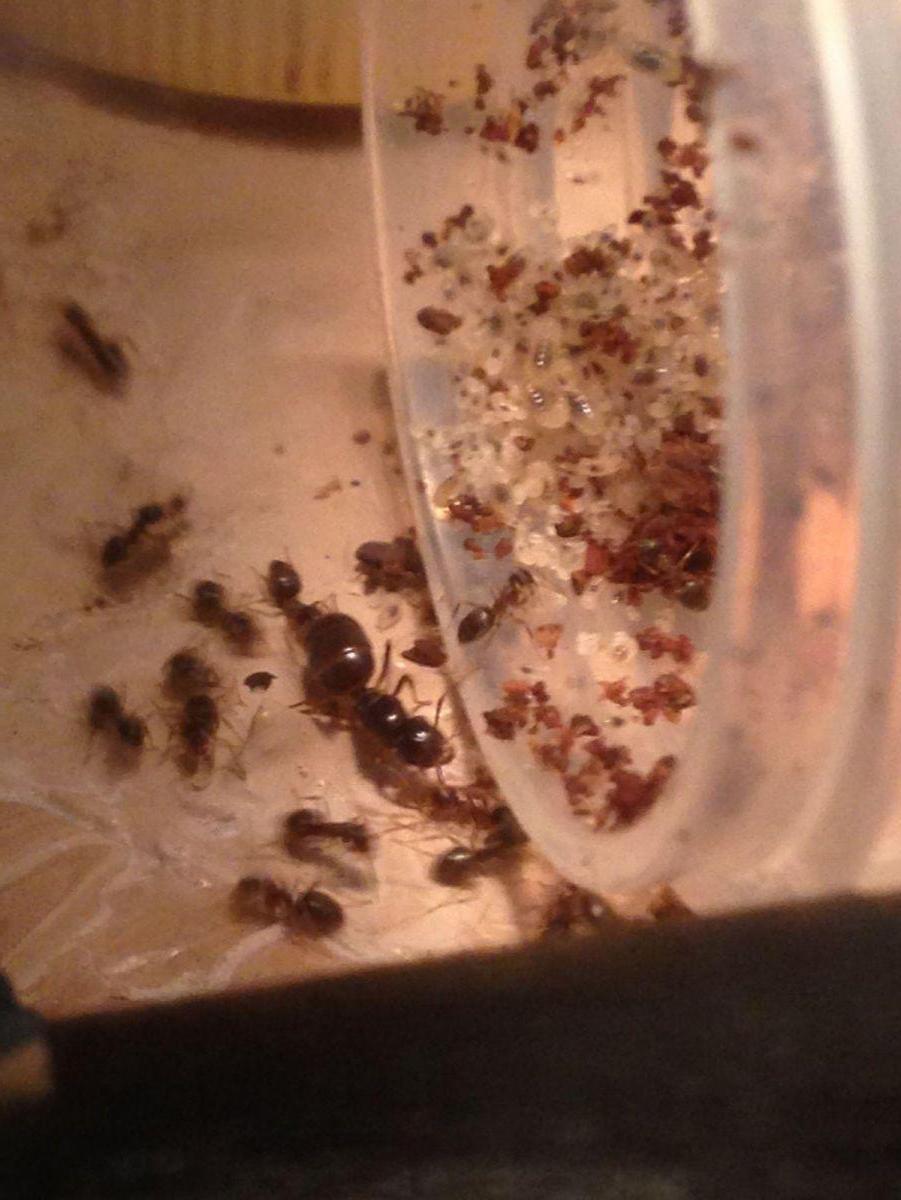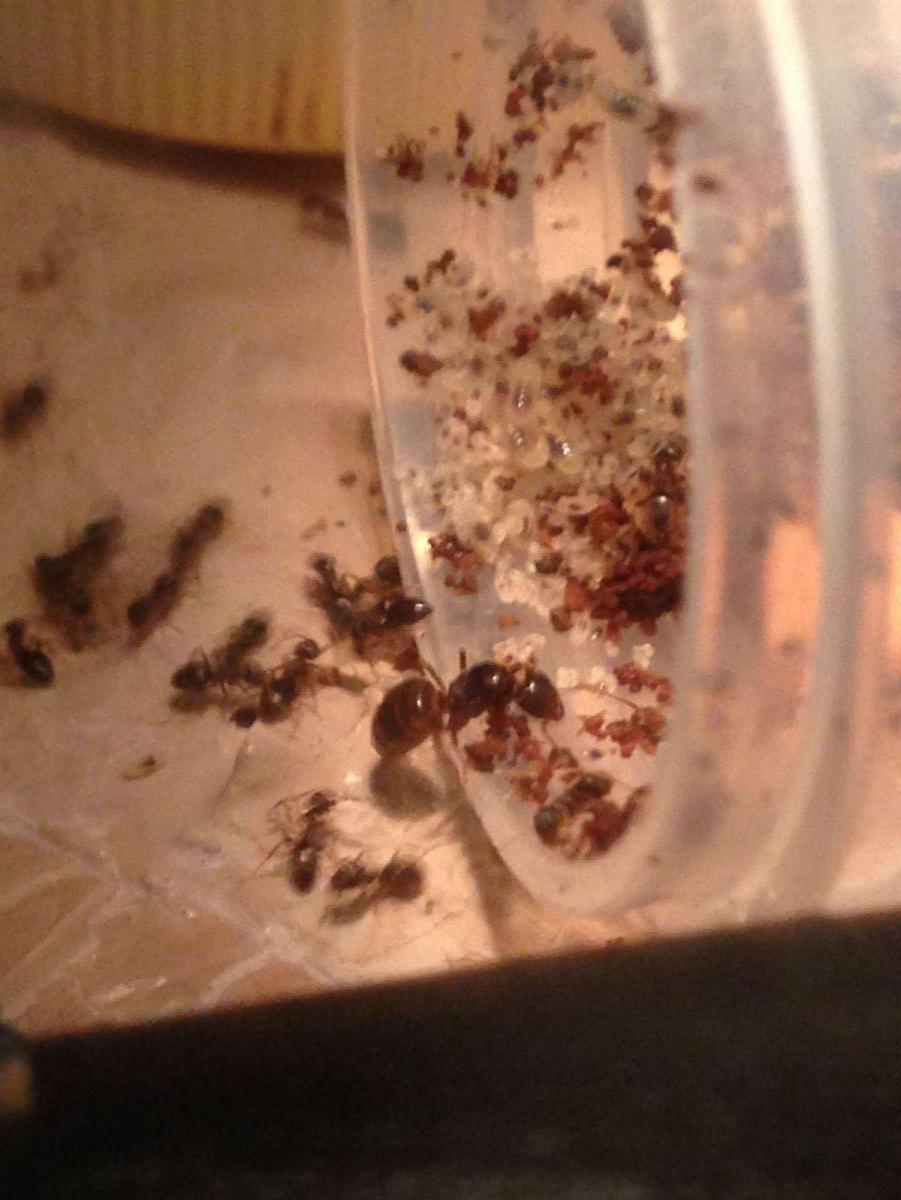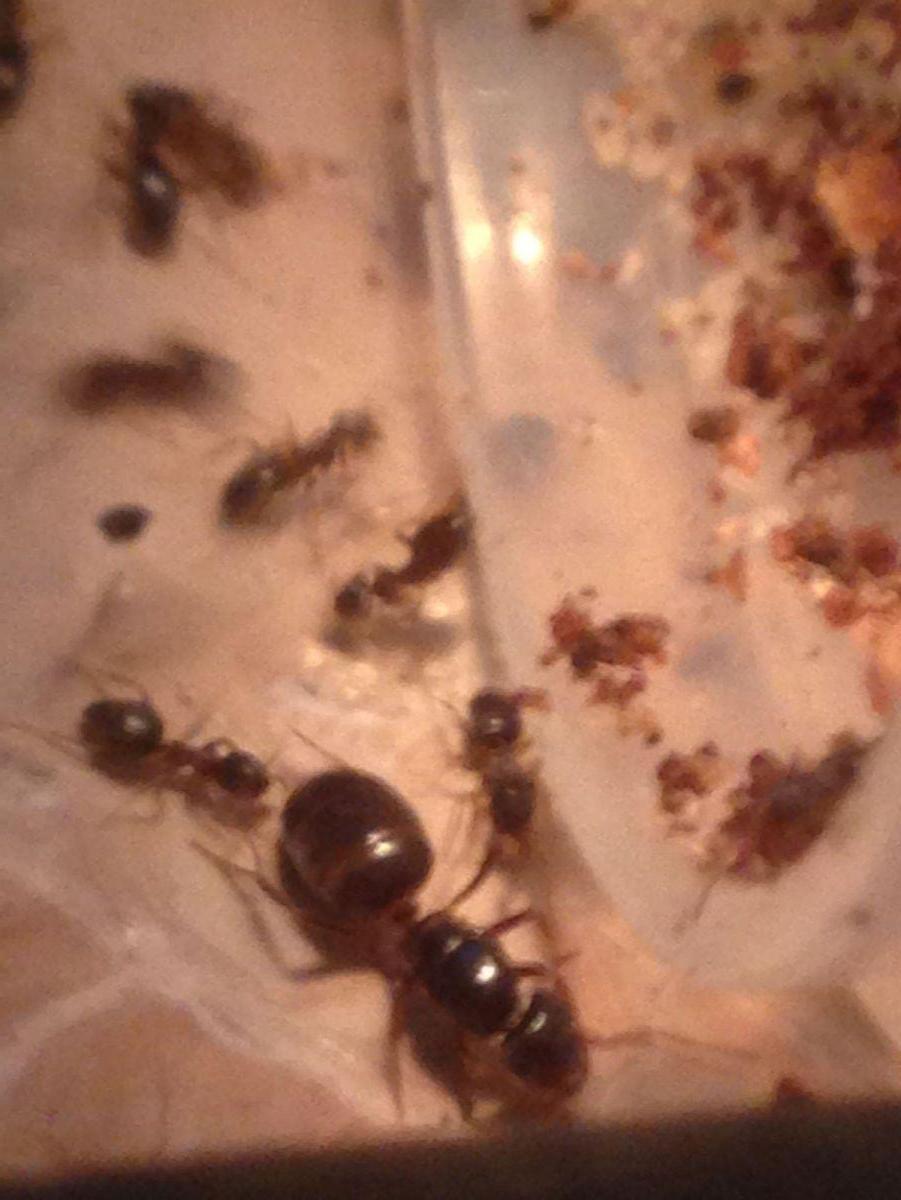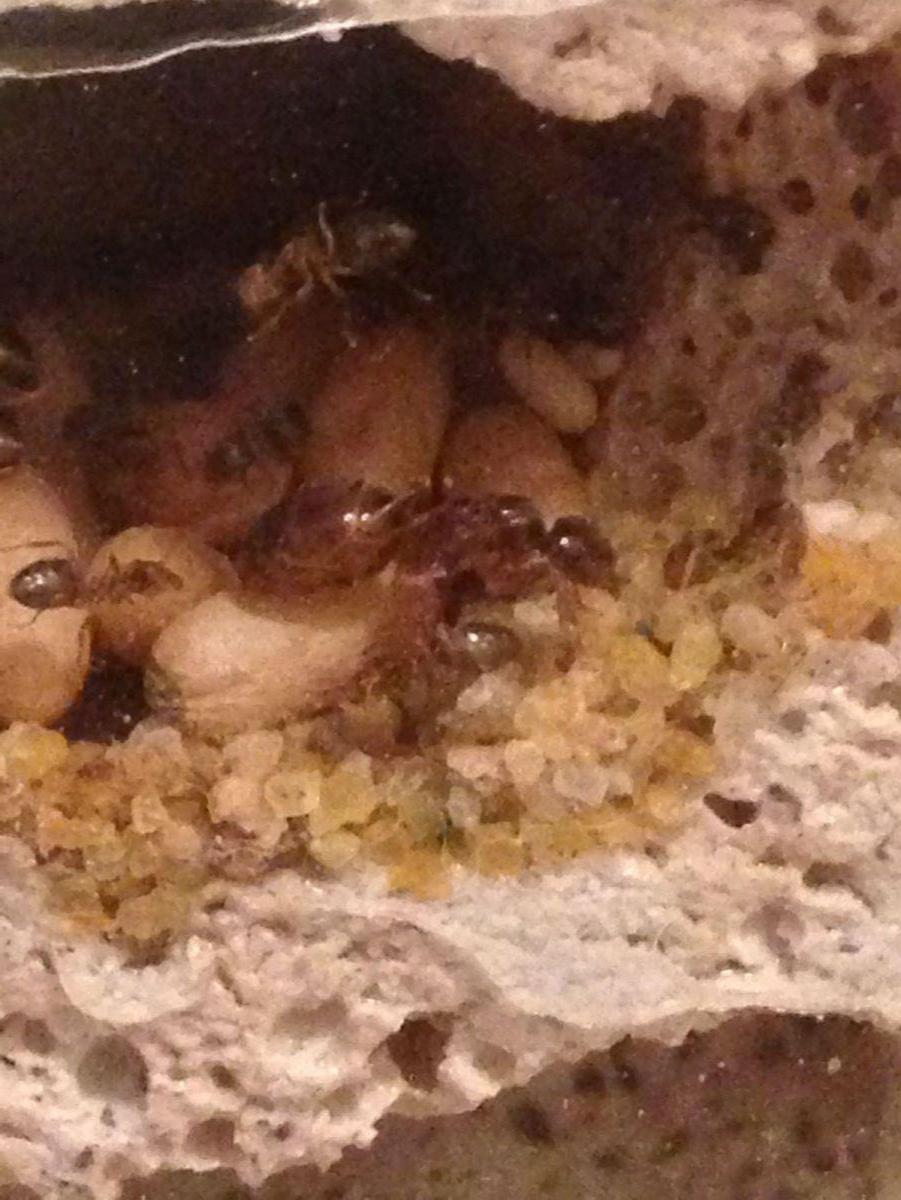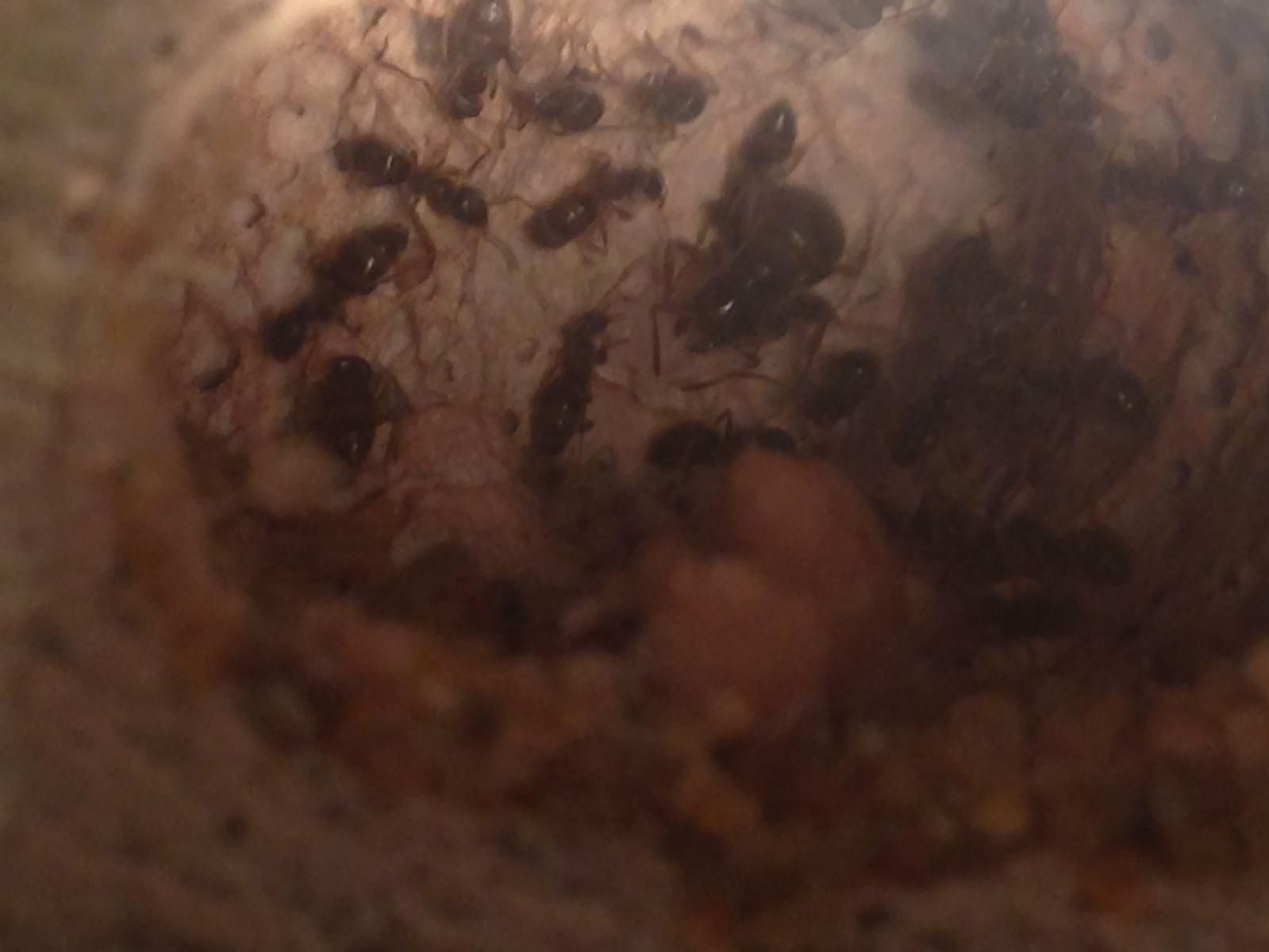I wanted to start this journal for this find, as it seems to be a pretty rare find and I think it will be extremely interesting to observe.
On Saturday May 24th, I went Anting with a contact I met through the Anting forums. It turned out that we both lived in Columbus, OH.
During the trip to a park, we found a complete Lasius colony within a log, and quickly noticed a queen. Since the queen was found so quickly, we decided to spend the next 20 minutes or so collecting the entire colony from the log with our aspirators. It was noticed that the queen didn't look like the typical Lasius queen and we believed it to be parastic. So the question was - Was this now the established queen of the colony or was it in the process of trying to infiltrate it when we found the colony? We never found another queen, and when mixed with the workers the queen seemed to be accepted.
The colony has cocooned pupae of what look to be alates as well as several eggs and larvae. So the question will be, has the new queen laid any of the larvae or is just starting? Will be very interesting to watch.
Currently, I had placed the field collection container in an out world, and then placed a wrapped test tube with water/cotton plug as well. The whole colony moved into the test tube overnight - so this will make for easy placement into a permament set up. I had already ordered a Tar Heel Ants formicarium awhile back - first intended for my start up Camponotus colonies - but will repurpose it for this special find. It should be here this week, so I will be excited to get them moved in for observation.
